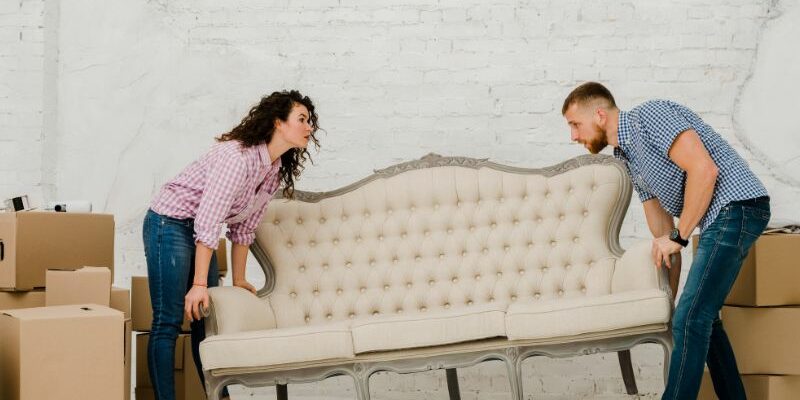Do you ever suffer from severe lower back pain that suddenly seems to 'kick in'? We often refer to this as 'going through the back', but the correct name is lumbago. A very annoying pain that can severely restrict your freedom of movement. Wondering how lumbago occurs and what you can do yourself? We would like to tell you more about it in this blog.
Lumbago: the symptoms and causes
Lumbago, or acute lumbago, often occurs acutely after an incorrect movement or strain, for example after bending or lifting. The cause of lumbago cannot always be 100% ruled out, which is why the condition falls under 'nonspecific back pain'. However, it is usually a sprain or tear in one of the walls of an intervertebral disc. Pain stimuli in the intervertebral disc cause the muscles in your back to tighten hard. In this way, your body itself tries to prevent worse damage in the intervertebral discs. The tightening may cause the muscles to become stiff or even slightly cramped.
Symptoms
The extent of your symptoms depends on the severity of your injury. You can consider the following symptoms:
- Severe, stabbing lower back pain
- Stiff muscles around the lower back
- Motion restriction and lower back pain during movement
- Sometimes radiating pain to buttocks and upper legs
- Sitting (or lying) in the same position for long periods of time is often painful
Causes
As mentioned above, lumbago often occurs suddenly, due to incorrect movement or overuse of the back. Furthermore, we also recognise the following causes:
- Stress (causes faster muscle tension)
- Taking the wrong posture for a long time
- Rug hernia in the lower back
- Poor physical condition
- Ageing (the normal ageing process of the intervertebral discs)
Besides lumbago, do you experience loss of strength, tingling or numbness in your legs? Does the pain radiate beyond your knee? Or is the back pain the result of an accident? If so, always contact your GP immediately!
Treatment and recovery from lumbago
Luckily, the symptoms of lumbago usually disappear on their own. Although the pain may tell you otherwise, it is important to keep moving. Do this in moderation, though! For example, do not start exercising yet, but take a short walk several times a day. Walking will help keep the muscles in your back supple, so you will suffer less from the stiffness.
Can't move because the pain is too intense? Then you can take painkillers to ease the pain. In this case, it is better to be able to move painlessly with painkillers than to adopt a convulsive posture. Want advice on the right painkiller? If so, always ask your GP, pharmacist or chemist for help!
If you are still in pain after 6 weeks, we can start treatment. The course is then mainly aimed at preventing lumbago symptoms in the future. In the meantime, would you like help with correct posture or moving around without pain? Even then, our physiotherapists are at your service!
What can you do yourself for lumbago?
Are you suffering from lower back pain? Then it is very important to keep moving calmly! Not only will you keep your muscles supple and strong, but it also stimulates blood flow in your muscles. With good blood flow, your body can carry more oxygen to the muscles and get rid of waste products from inflammation, for example. To exercise without major strain, you can walk, cycle or swim, for example. 30 minutes a day is enough.
While exercising, it is important to keep your back from further strain. So intense exercise or heavy physical work is not recommended! But even an office job can be a pain. A correct sitting posture is very important to avoid worse back pain. Sitting job? Make sure you stand for 5 minutes every hour to stretch your muscles.
Exercises you can do yourself
Would you also like to work on your recovery at home? Then there are some simple exercises which you can do yourself:
- Making the back concave and convex
Sit on your hands and knees on the floor. Look up slowly, hollowing your back. Then gently bend your neck down again and arch your back. Repeat this movement 10 times at a gentle pace. - Knees to the chest
Lie on your back on the floor. Put your feet flat on the ground so that your knees are bent. Gently bring your left knee as close to your chest as possible using your hands. Gently return your left knee to starting position and repeat the movement with your right knee. Repeat this exercise 10 times. - Turning back
For this exercise, start in the same position as for exercise 2: flat on the floor, lying on your back, with your knees bent. Put your arms spread out on the ground with your palms down. During this exercise, it is important that your shoulders remain touching the ground at all times. Keep your knees together and alternately bring them all the way to the left and right. The idea is to rotate your hips, pelvis and lower back. Perform the exercise about 10 times on both sides.
Medical devices for lumbago
Some people with lumbago symptoms benefit from the use of medical devices, such as a back brace. Such a brace can help them adopt the right posture to relieve the joints in the back. It reduces the risk of further strain. Do you think a brace could help with your symptoms? If so, ask your physiotherapist for advice!
More information or make an appointment?
Would you like more information about moving with lumbago? Or would you like to make an appointment for help with this? Then you have come to the right place at FriskFysio in Amstelveen! Call us at 085-5000333 or send an e-mail to info@friskfysio.nl. You can also use the contact form on our website.







